#Giovanni Gigli
Text

Giovanni Segantini (Italian, 1858-1899)
Gigli
27 notes
·
View notes
Note
Hello! This is pure speculation but - giving Elizabeth being sick after Arthur's birth, her being ill again (around 1497 I think?) when Margaret Beaufort mentions that in a letter (and this time it had nothing to do with a pregnancy, as far as I know), the fear for her life at Edmund's birth etc., do you think she might have had a more fragile constitution than what was previously assumed?
I ask that because some (most) historians really portray her as super healthy and having these easy pregnancies without actually diving a little deeper. To me, at least - and again it's only my opinion based on speculation - she does not seem to have had such easy pregnancies as assumed, or such a robust health as usually supposed.
I could very much be wrong, but I was really curious to know your opinion on the matter. I hope you have a great day! 😊💜
Hi! Recently Anna Duch has highlighted Elizabeth of York's difficult pregnancies. There's the time she was ill right after Arthur's birth in 1486 (and possibly before his birth too, as she didn't accompany the king on his northern progress even though symbols representing both king and queen had been programmed in advance), Prince Edmund's pregnancy in 1499 when the Spanish ambassador said her life was despaired of, her pregnancy in 1502 that saw some medical expenses following each other very closely, Princess Katherine's birth in 1503, and that illness alluded by Margaret Beaufort after Princess Mary's birth in 1496 (not 1497). We know that because her letter to Elizabeth's Lord Chamberlain is dated 25 April 1496 (Mary was born on 18 March 1496):
As for news here I am sure ye shall have more surety than I can send you. Blessed be God, the King, the Queen, and all our sweet children be in good health. The Queen hath been a little crased [i.e., ill], but now she is well, God be thanked. Her sickness is [?not] so good as I would but I trust hastily it shall, with God’s grace, whom I pray give you good speed in your great matters, and bring you well and soon home.
Margaret signs her letter at the Palace of Sheen (later Richmond), which makes me think she was accompanying the queen during her confinement before and after the birth. So what we have here is Margaret retelling the queen's sickness a month after her last labour, and knowing Elizabeth became sick after Arthur's birth as well, this illness might have had to do with childbirth too. But Elizabeth might have had poor health in general. We can't trace all of the medical expenses Henry VII paid for his wife, for example, to her pregnancies. Although Elizabeth's health is not often discussed, there's an old novel where apparently Elizabeth of York does nothing but complain and get sick, so I don't know if it was always the case.
There's also the fact that Henry VII didn't have sturdy health, either. In 1487 (so when Henry VII was still relatively young), Giovanni de Giglis, the papal collector in England, wrote to Pope Innocent VIII saying that 'on account of ill health the King requests a dispensation authorizing him to eat meat on fast days. Supposes that the Pope has already granted these demands'. Back in 1486, the pope had already granted an 'indult for [Henry VII and Elizabeth of York] and each of them and six persons, and for Margaret, countess of Richmond, the said king's mother, and other six persons, not to be bound to fast in Lent, and during that season to eat eggs, cheese, butter and other milk-meats, whenever they shall think fit'.
It's hard to decide whether Henry VII really had poor health from the very beginning of his reign or if it was just diplomatic parlance to get a dispensation releasing him (and his wife and mother) from fasting. It does seem like he got a dispensation to eat 'milk-meats' in 1486 and then asked another for 'meat' in general the following year. It might just be a translation inconsistency though, and maybe the two documents allude to the same thing (milk-meats), or it might be that the papal collector wasn't aware that Henry had already gotten a dispensation. It seems odd though, considering Giglis mentioned that he had asked the pope for Henry's dispensation several times.
Considering Elizabeth of York was also included in that dispensation, is it possible Elizabeth had ill health too? I don't know! It does seem like the type of papal privileges royals used to get on the regular (like indulgences for sins etc). All I know is that Elizabeth's health certainly doesn't seem to have been sturdy enough to support calm and healthy pregnancies, or at least it appeared so half the times she was pregnant (4/7).
I hope you have a great day too! 🌹x
24 notes
·
View notes
Text

Arturo Toscanini in 1898:
"By Heaven! If this Neapolitan continues to sing like this, he will make the whole world talk about him."
Beniamino Gigli:
"I wonder what would have become of me if, like him, I had been born in a city slum; for I did not have the gifts of personality that enabled Caruso to create life and warmth around him wherever he went."
Bruno Walter:
"I loved his voice, his talent, the sense of beauty expressed in his nuances of timbre, his portamento and rubato, his great musicality and naturalness, and we got along so well."
Caruso about his first teacher:
"It was he [Guglielmo Vergine] who impressed, time and again, the necessity of singing as nature intended, and - I remember - he constantly warned, don't let the public know that you work. So I went slowly. I never forced the voice."
Caruso about his performance:
"I know that I shall sing only a certain number of times. So I think to myself, "Tonight I will hold back my voice. I will save it a little and that will mean I may be able to sing a few more times." But when I go before the audience, when I hear the music and begin to sing, I cannot hold back. I give the best there is in me - I give all."
Caruso about his singing:
"I suffer so much in this life. That is what they [the audience] are feeling when I sing, that is why they cry. People who felt nothing in this life cannot sing."
Caruso about Nellie Melba and Melba about Caruso:
Not a quote but an action. The Australian soprano Nellie Melba was notorius for her ruthlessness and coldness. Performing with her in La Bohème Caruso, as a joke, pressed a hot sausage into her hand that he'd hidden in his pocket as he sang "Che gelida manina, se la lasci riscaldar."("What a cold little hand, let me warm it"). She had considered Caruso coarse and uncultivated and this, of course, only confirmed that ...
Melba, however, was impressed with Caruso's voice and wrote in her autobiography (Melodies and Memories): "As a voice - pure and simple - his was the most wonderful tenor I ever heard."
Geraldine Farrar:
“There are two singers you must put aside, one is Enrico Caruso, the other is Rosa Ponselle. Then you may begin to discuss all the others!”
Giovanni Martinelli about Caruso:
At a party an overdressed flamboyant woman persisted in demanding answers from Giovanni Martinelli
to questions in a loud voice to attract attention. Finally she said, “Come now, Mr. Martinelli, tell us the truth – Caruso was never as good as his press made him to be, is that not the truth.” Martinelli swung around and faced his tormentor. “Madame”, he declared in his accented, but thoroughly accurate English, “Put Gigli, Lauri-Volpi and me together – make us one tenor – and we would not be fit to kiss Caruso’s shoe tops”. “Does that answer you?”
Guilio Gatti-Casazza (director of the Metropolitan Opera):
"I heard all the great tenors of my time over and over again. Many of them were wonderful artists and had extraordinary voices. But in my opinion, not a single one of them ever sang an entire role with such vocal and artistic consistency as Caruso."
John McCormack about Caruso's voice:
"36 years later that voice still rings in my ears, the memory of it will never die."
Richard Strauss in excitement after hearing Caruso the first time:
"He is singing the soul (spirit) of the melody!"
Rosa Ponselle:
"When you speak of tenors, you have to divide them into two groups. Caruso in the first group. All the others are in the second."
The soprano Geraldine Farrar writes in her biography that she, the first time she stood on stage with Caruso, forgot to sing as she had broken into tears from the beauty of Caruso's voice.
"I have seen him sob for five minutes in his dressing room after the first act [of Pagliacci]; I have seen him fall on the stage, faint from emotion; and I have also seen him come off whistling gaily and joking with the chorus. Whatever his own emotions were, his audience was invariably overwhelmed. I asked him to explain the secret of this power. He said, "I suffer so much in this life, Doro. That is what they feeling when I sing, that is why they cry. People who felt nothing in this life cannot sing."From "Enrico Caruso - His Life and Death" by Dorothy Caruso.
#opera#classical music#music history#bel canto#composer#classical composer#aria#classical studies#Enrico Caruso#Caruso#tenor#lyric tenor#dramatic tenor#Metropolitan Opera#Met#La Scala#Bolshoi Theatre#Mariinsky Theatre#His Majesty's Theatre#Her Majesty's Theatre#classical singer#classical singing#opera singer#chest voice#classical history#classical musician#classical musicians#musician#musicians#mestro
3 notes
·
View notes
Text
Prima tappa nazionale dello Strega Tour all’ex Monastero dei Benedettini di Catania. Pienone di pubblico per la “dozzina” del più importante premio letterario
+++
Sullo sfondo il manifesto del premio Strega 2024 firmato da Andrea Tarella: dalla testa di una strega occhiuta emergono creature care all’immaginario letterario, come incantate da una magia. E le oltre 400 persone che stamattina hanno riempito l’auditorium del DISUM all’ex Monastero dei Benedettini, hanno vissuto la fascinazione delle storie partecipando alla prima tappa nazionale del più prestigioso premio letterario italiano.
Per il secondo anno di fila è stata Catania a ospitare la dozzina semifinalista dello Strega, grazie ancora una volta al Catania Book Festival, l’evento ideato e organizzato da Simone Dei Pieri e da un instancabile staff di giovanissimi ma già navigati promotori culturali. A intervistare le autrici e gli autori nell’ambito dei titoli proposti dagli “Amici della domenica” al Premio Strega 2024, sono stati Mattia Insolia e Lorena Spampinato, entrambi giovani scrittori già affermati.
Quest’appuntamento ha incontrato anche la collaborazione dell’ Università di Catania, della Fondazione Federico II- Regione Siciliana, del Comune di Catania e della società di consulenza Balena Bianca, rappresentati sul palco dalla direttrice DISUM, Marina Paino, che ha aperto l’incontro, da Giuseppe D’Ippolito, in rappresentanza della Fondazione e dall’assessore comunale alla Pubblica Istruzione, Andrea Guzzardi.
I saluti sono arrivati anche da Valerio Valzelli per Bper Banca, lo sponsor nazionale del Premio Strega.
Simone Dei Pieri ha ricordato che, “oltre a vantare una storia secolare, purtroppo Catania è anche una città con percentuali spaventose di abbandono scolastico, in cui metà delle biblioteche locali sono chiuse mentre in Sicilia oltre 4 milioni di persone non hanno letto un libro durante lo scorso anno”.
Di contro, però, “se i libri servono a qualcosa, allora servono a comprendere, a immaginare e soprattutto a cambiare la realtà, se questa non ci piace. - ha sottolineato il direttore del Catania Book Festival- Per questo motivo dopo la grande festa di oggi, serve rimettere al centro chi non ha accesso alla lettura, ma anche chi, nonostante anni di studio alle spalle, vede vanificati i propri sforzi”.
E di consapevolezza, soprattutto letteraria, hanno parlato anche gli undici semifinalisti presenti a Catania (Paolo Di Paolo, autore di “Romanzo senza umani”, edito da Feltrinelli e proposto da Gianni Amelio, non è potuto intervenire), ciascuno custode di una storia.
Sonia Aggio, autrice di “Nella stanza dell’imperatore” (Fazi), proposto da Simona Cives, offre ai lettori un romanzo storico che mostra il volto segreto dell’Impero romano d’Oriente alla corte dei Basileus di Bisanzio e racconta l'ascesa al trono dell'imperatore bizantino Giovanni Zimisce. “Ho pensato alla situazione sovrannaturale, alle streghe, per creare una situazione d'incertezza e dare umanità a una persona esistita più di mille anni fa”.
In “Adelaida” (Nutrimenti) di Adrián N. Bravi, romanzo proposto da Romana Petri, la protagonista è Adelaida Gigli, una delle figure femminili più sorprendenti dell'Argentina del secolo scorso. Pronta a nascondere armi e dissidenti nella sua casa, a ridere in faccia al potere, la donna “era una di quelle figure che hanno segnato la mia vita dopo che lho conosciuta. - dice Bravi- Frequentare lei era per me come riscoprire le mie radici. Mai avrei pensato di poterlo fare a Recanati”.
Donatella Di Pietrantonio con “L’età fragile” (Einaudi), proposto da Vittorio Lingiardi, richiama un episodio di cronaca che risale agli anni Novanta, accaduto nel cuore dell'Abruzzo appenninico, e si occupa proprio della vulnerabilità quale compagna di tutti i personaggi: “Non avevo mai pensato di scrivere sulla violenza di genere perché temevo che potesse diventare un’operazione programmatica. L’avevo escluso”.
Tommaso Giartosio in “Autobiogrammatica” (minimum fax), proposto da Emanuele Trevi, narra di un’esistenza – unica e comune – intrecciata con la sacralità del linguaggio del lessico famigliare. “Ginzburg racconta benissimo il lessico famigliare da cui ciascuno di noi può riconoscersi. Il rapporto con i genitori è solo accoglienza ma anche conflitto. I genitori, e i genitori dei nostri genitori, ci consegnano un mondo al quale ci possiamo riconoscerci anche no. L’unico modo per raccontare la propria vita senza cadere nell’auto referenza per me è stato proprio passare dal linguaggio”.
Antonella Lattanzi con “Cose che non si raccontano” (Einaudi), proposto da Valeria Parrella, racconta il desiderio di essere madre in un romanzo autobiografico molto intenso dove il corpo e il dolore sono protagonisti. “Le donne non parlano mai di aborto anche quando hai cercato di una gravidanza . Ho pensato a tutti i corpi medicalizzati devono avere una voce e ho pensato che dalla rabbia poteva nascere un romanzo”.
Valentina Mira è autrice del romanzo “Dalla stessa parte mi troverai” (SEM), proposto da Franco Di Mare, e riesamina la storia di Mario Scrocca, un giovane ingiustamente arrestato per due omicidi nell’ambito della strage di Acca Larentia e che venne trovato morto impiccato in una cella del carcere di Regina Coeli. Il romanzo è stato al centro di molte polemiche da parte del centro destra italiano. “La pacificazione può esserci ma solo se c’è una presa di responsabilità. - ha detto- C’è differenza tra essere state vittime e fare del vittimismo, e legittimare posture aggressive che portano ad essere carnefici”.
Melissa Panarello in “Storia dei miei soldi” (Bompiani), proposto da Nadia Terranova, racconta sé stessa ma con la creazione di un doppio letterario. Nel romanzo la protagonista è appunto Melissa che dopo anni incontra Clara, l’attrice che la interpretò nella trasposizione cinematografica del suo romanzo (Panarello è autrice del bestseller datato 2003 “Cento colpi di spazzola prima di andare a dormire”). “I soldi rivelano quello che tu sei e raccontano la tua storia; così come il sesso sono trattati come un tabù, come fossero qualcosa di sporco”.
Daniele Rielli è l’autore del romanzo a più voci “Il fuoco invisibile. Storia umana di un disastro naturale” (Rizzoli), proposto da Antonio Pascale, e illustra con l’approccio letterario un dramma ecologico e sociale partendo dalla Xylella, il batterio che nel mondo ha causato la più grave epidemia delle piante e che in Puglia ha distrutto ettari di ulivi, con tutta la storia che racchiudono, compresa quella della famiglie locali. “Mio padre e mio nonno sono salentini; la xylella è una normale malattia delle piante ma da questa si scatena una caccia alle streghe, con tanto negazionismo. Negazionismo che funziona perché offre ingredienti semplici ma ben scritti: il cattivo straniero, e gli ulivi, creature molto simboliche”.
Con “Aggiustare l’universo” (Mondadori), proposto da Lia Levi, la scrittrice Raffaella Romagnolo descrive l’Italia del dopoguerra dove regnano le macerie e narra di una giovane insegnante, Gilla, che ripara oggetti segnati dal tempo e vite segnate dal dolore. E poi c’è Francesca, che proviene dall’orfanotrofio e che non parla mai. Il suo vero nome è Ester ed è una “vittima della difesa della razza”.
“Genova fu la città più bombardata dalla seconda guerra mondiale e partecipò in massa alla Resistenza. Per la protagonista passare di lì non ha nulla di eroico, semmai è doloroso”.
Chiara Valerio in “Chi dice e chi tace” (Sellerio), proposto da Matteo Motolese, offre un ritratto di donne in costante mutazione, un’indagine tra silenzi e dicerie di provincia ambientata a Scauri, sul Tirreno. La protagonista si muove lungo un percorso di auto scoperta e in un ambiente dove la diversità non è ben vista. “Non si fa la gradazione degli amori. L’amore non è buono né cattivo anche se misuriamo la lunghezza dei matrimonio come misura dell’amore. Ebbene la mia protagonista, Lea Russo, mi sta simpaticissima perché lei non ci sta”.
Dario Voltolini in Invernale (La nave di Teseo), romanzo proposto da Sandro Veronesi, rievoca l’immagine del padre di mestiere macellaio nel mercato torinese di Porta Palazzo; un padre scomparso prematuramente che ispira una preghiera nata dal ricordo e dall’amore filiale. La malattia diventa trasformazione del corpo ma anche l’occasione per fare esperienza di un nuovo linguaggio. “Ho impiegato 40 anni a scrivere questo libro, perché volevo essere certo di poter maneggiare lo strumento della scrittura per raccontare mio padre” .



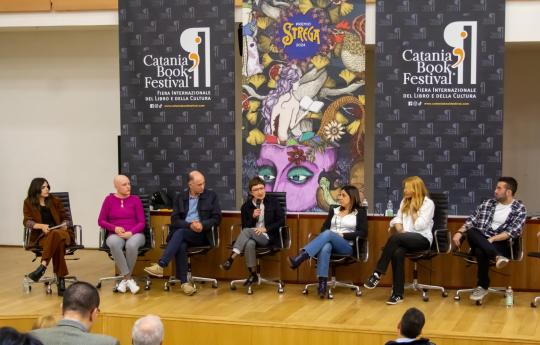
0 notes
Text
Cobolli Gigli: "ADL minaccia la Juve? Ha ottimi avvocati ma sono i risultati a decidere"
Sul tema De Laurentiis e le sue accuse alla Juventus, che vorrebbe fuori dal prossimo Mondiale per club è intervenuto l’ex presidente bianconero Giovanni Cobolli Gigli, che a 1 Station Radio ha detto: “Ha ottimi avvocati che, a volte, l’hanno portato a vincere in dinamiche sfavorevoli. tuttavia, saranno i risultati che decideranno. Se ad andare al Mondiale per club sarà il Napoli, in virtù delle…
View On WordPress
0 notes
Text
Biotecnologie, Tajani: «Puntiamo a internazionalizzazione comparto»

Biotecnologie, Tajani: «Puntiamo a internazionalizzazione comparto».
Prende oggi avvio il Tavolo di lavoro per l'internazionalizzazione delle industrie nel settore delle biotecnologie, voluto dal Ministro degli Affari Esteri Antonio Tajani: un primo concreto seguito della conferenza sulle biotecnologie emergenti, ospitata alla Farnesina lo scorso 14 novembre.
«Con più di 800 imprese, 14mila addetti, oltre 13 miliardi di fatturato e una forte componente di Ricerca e Sviluppo, il comparto italiano delle biotecnologie sta vivendo una fase di notevole sviluppo e rappresenta un importante volano per la crescita in settori a sempre più elevato valore aggiunto», ha dichiarato il Ministro Tajani.
La costituzione del tavolo, chiamato a formulare strategie e raccomandazioni in merito all'internazionalizzazione degli attori attivi nel campo delle biotecnologie per rafforzare l'intero comparto nazionale, «riflette l'attenzione che il Governo attraverso il Ministero degli Esteri attribuisce allo sviluppo internazionale delle filiere innovative e delle tecnologie emergenti, nel quadro della Diplomazia della Crescita», secondo Tajani.
Il tavolo vede la presenza di rappresentanti di istituzioni, centri di ricerca, imprese, associazioni di categoria e mondo finanziario. Tra gli altri, in qualità di moderatore, Pierluigi Paracchi, CEO di Genenta e membro del Comitato esecutivo di Federchimica-Assobiotec; Pierluigi Petrone, Vice Presidente Farmaindustria; Giovanni Caforio, Presidente esecutivo di Bristol Myers Squibb; Maria Cristina Porta, Direttrice Generale della Fondazione ENEA Tech e Biomedical; Giuseppe Gigli, Direttore dell'Istituto di Nanotecnologia CNR-Nanotec; Rino Rappuoli, Direttore scientifico della Fondazione Biotecnopolo di Siena; Gianmario Verona, presidente di Human Technolpole. Vi prenderanno parte anche rappresentanti del Ministero delle Imprese e del Made in Italy, del Ministero dell'Università e della Ricerca e dell'Agenzia ICE....
#notizie #news #breakingnews #cronaca #politica #eventi #sport #moda
Read the full article
0 notes
Text
Il Muro del Cambiamento: l'installazione di Caccamo a Palazzo Vecchio
Questa mattina è stata presentato nella Sala dei Gigli a Palazzo Vecchio la nuova installazione interattiva a cura del cantautore Giovanni Caccamo dal titolo “Il Muro del Cambiamento”.
È un muro di parole direttamente collegate al concetto di cambiamento che vengono proiettate in tempo reale su un ledwall bianco.
Dario Nardella e Giovanni Caccamo
Collegandosi al sito murodelcambiamento.it o…

View On WordPress
#art#artblogger#arte#bellezza#english#Firenze#florence#madeinitaly#Michelangelo Buonarroti#mus.e#Palazzo Vecchio#rinascimento
0 notes
Text
youtube
Oggi rispondiamo alla domanda a che gioco stiamo giocando con "Murder Party Pocket, Cala Il Sipario." un nuovissimo gioco investigativo di Cranio Creation su soggetto di Maurizio De Giovanni e che vede coprotagonista uno dei suoi personaggi più amati: il commissario Ricciardi, coprotagonista perché i protagonisti veri siamo noi!
Maurizio De Giovanni, autore di gialli tra i più amati del nostro paese ha scritto un vero e proprio nuovo caso del Commissario Riccardi sul quale dovremo, non solo indagare ma anche tentare di non apparire colpevoli e già perchè il colpevole "potrebbe" essere tra di noi; Murder Party Pocket, Cala Il Sipario infatti è un vero e proprio invito a cena con delitto dove tutti i giocatori sono gli indiziati di un omicidio!
In Murder Party Pocket, Cala Il Sipario il soggetto di Maurizio De Giovanni si mette al servizio di un gioco creato da Flaminia Brasini, Virginio Gigli, per offrire un'esperienza di gioco unica ed estremamente valida: per una serata vivremo una delle indagini del Commissario Riccardi diventandone noi stessi i protagonisti!
Murder Party Pocket, Cala Il Sipario è un gioco che si può fare in solitaria, in due, ma da il meglio di se dai 3 ai 6 giocatori, consigliato dai 12 anni in su, per la durata di 60minuti, edito da Cranio Creations!
#Around the table#boardgame#review#giochi da tavolo#giochi di società#board games#bgg#boardgamegeek#come si gioca#board game#ita#italiano#gdt#giochi da tavolo per#giocatori#Murder Party Pocket#Murder Party Pocket Cala il sipario#Il commissario Ricciardi#Gioco sul Commissario Ricciardi#Gioco Maurizio de Giovanni#Giocare con maurizio de Giovanni#De Giovanni Gioco#Commissario Ricciardi Gioco#Vivere il Commissario Riccairdi#Com'è il gioco di Maurizio De Giovanni#Youtube
0 notes
Photo

#iltempoimmobile . . . Lenta la neve fiocca, fiocca, fiocca. Senti: una zana' dondola pian piano. Un bimbo piange, il piccol dito in bocca; canta una vecchia, il mento sulla mano, La vecchia canta: - Intorno al tuo lettino c'è rose e gigli, tutto un bel giardino -. Nel bel giardino il bimbo s'addormenta. La neve fiocca lenta, lenta, lenta. (Giovanni Pascoli - Orfano) #abandonedearth #abandonedafterdark #decay #abandonedcentral #urbex_utopia #ig_urbex #urbex_supreme #abandon_seekers #nature_takes_over #abandoned_excellence #world_wide_urbex #sombrexplore #urbex_apocalypse #glitz_n_grime #total_abandoned #abandonedworld #urbanexploration #abandonedplaces #raw_abandoned #aband0n_all_h0pe #ig_abandoned #beniculturali #tesori_italiani #tesoriabbandonati #urbexitalia #urbexitaly #italiaabbandonata https://www.instagram.com/p/Cq3e7Uoo_PG/?igshid=NGJjMDIxMWI=
#iltempoimmobile#abandonedearth#abandonedafterdark#decay#abandonedcentral#urbex_utopia#ig_urbex#urbex_supreme#abandon_seekers#nature_takes_over#abandoned_excellence#world_wide_urbex#sombrexplore#urbex_apocalypse#glitz_n_grime#total_abandoned#abandonedworld#urbanexploration#abandonedplaces#raw_abandoned#aband0n_all_h0pe#ig_abandoned#beniculturali#tesori_italiani#tesoriabbandonati#urbexitalia#urbexitaly#italiaabbandonata
0 notes
Text
Juventus signing Ronaldo, was an expensive mistake, we have to let him go - former president Giovanni Gigli
Juventus signing Ronaldo, was an expensive mistake, we have to let him go – former president Giovanni Gigli
Juventus signing Ronaldo, was an expensive mistake, we have to let him go – former president Giovanni Gigli
Continue reading

View On WordPress
##Cristiano Ronaldo#Giovanni Gigli#Juventus#Juventus signing Ronaldo#Serie A#UEFA Champions League#was an expensive mistake#we have to let him go - former president
20 notes
·
View notes
Text
“Free Cristiano Ronaldo At The End Of The Season, He's An Expensive Mistake” - Former Juventus President, Giovanni Gigli
“Free Cristiano Ronaldo At The End Of The Season, He’s An Expensive Mistake” – Former Juventus President, Giovanni Gigli
Former Juventus President, Giovanni Gigli has stated that signing Cristiano Ronaldo from Real Madrid, was an expensive mistake.
According to him, the Italian club should be looking to free Cristiano Ronaldo at the end of the season.
Recall that Juventus put a striking deal with Real Madrid in place during the summer of 2018, to the five-time Ballon d’Or winner.
At first, the club reaped financial…

View On WordPress
0 notes
Photo
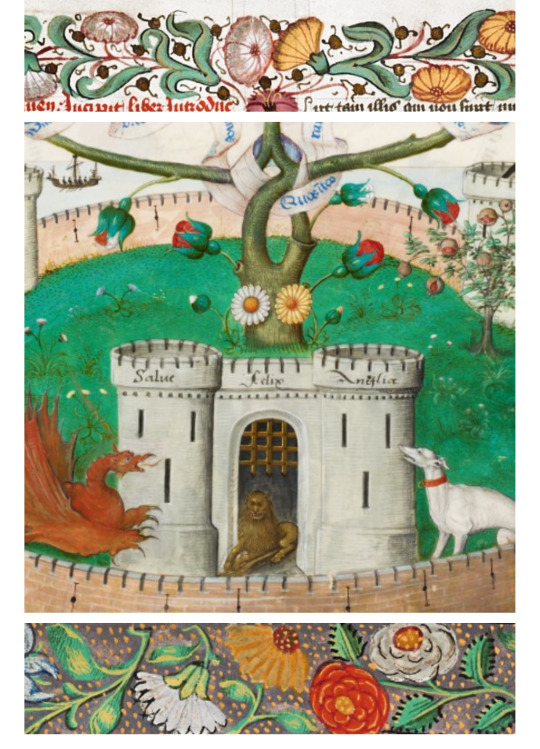

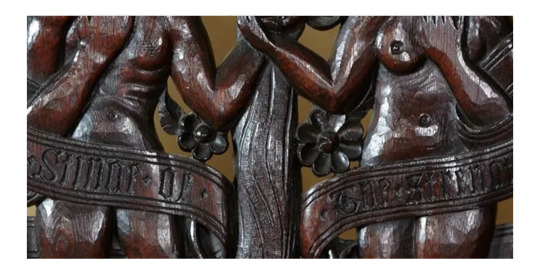
THE DAISY AND THE MARIGOLD
(or the red and the white rose)
The earliest example is the only surviving literature from their marriage: the epithalamium of Giovanni Gigli written for Elizabeth of York in her bridal chamber. A royal manuscript from 1490 shows a daisy and marigold united by a gillyflower, symbolic of marriage. Thirty years on, Henry VIII recognised his parents by these same floral symbols in the 1516 Royal Choirbook (Stephanie Brooke).
#this bed truly is the gift that keeps on giving#henry vii#elizabeth of york#historian: stephanie brooke
57 notes
·
View notes
Photo
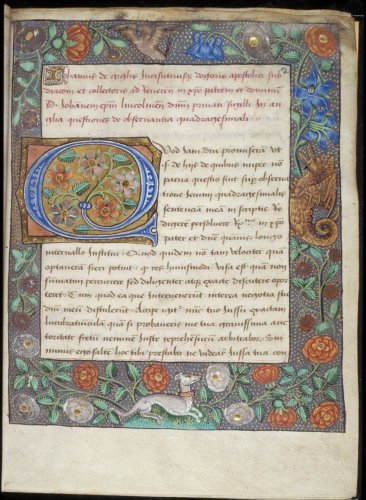
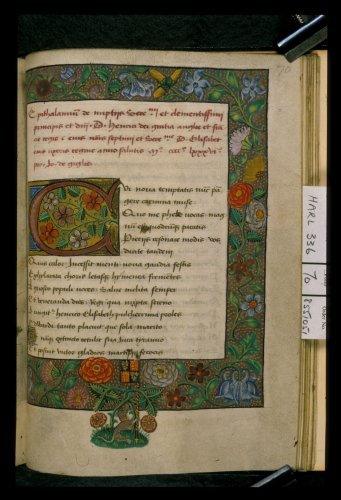
[Quaestiones de observantia quadragesimali (ff. 1v-67); Poem in praise of Henry VII's marriage to Elizabeth of York and of the birth of prince Arthur (ff. 67v-86v)]
Netherlands, 1487.
Provenance: “Presented by Giovanni Gigli of Lucca (b. 1434, d. 1498) to Richard Foxe (b. 1447/8, d. 1528), royal secretary to king Henry VII, administrator, bishop of Winchester, and founder of Corpus Christi College, Oxford: dedication texts (ff. 1v, 67v-69v), Tudor heraldic devices (f. 2), royal arms (f. 70).”
Notes: “The full borders (ff. 2v, 19, 27v, 52, 70), were added, probably in England. Giovanni Gigli of Lucca's poem celebrates the marriage of Henry VII (r. 1485-1509) to Elizabeth of York in 1486 and the birth of their first son Arthur (b. 1486, d. 1502), prince of Wales.
Gigli later became bishop of Worcester (1497-98).
The text on quadragesimal observance was originally written for John Russell, described as keeper of the privy seal (1473-83) and bishop of Lincoln (1480-94) (rubric on f. 2): the text therefore must date from 1480-83 when John Russell occupied both of these positions. Another copy of this text exists, made in England at the end of the 15th century or beginning of the 16th century (New Haven, Beinecke Library, ms. 25).
Link: https://www.bl.uk/catalogues/illuminatedmanuscripts/record.asp?MSID=4248&CollID=8&NStart=336
#Henry VII#Elizabeth of York#Tudor England#Giovanni Gigli of Lucca#Arthur Tudor#Prince of Wales#John Russell
27 notes
·
View notes
Text
Pogba Juventus, Cobolli Gigli: "Il vero errore è stato riprenderlo"
L’ex presidente della Juventus, Giovanni Cobolli Gigli, ha parlato della questione Pogba dando una sua opinione sulla bontà dell’operazione
La giornata di ieri ha, di fatto, chiuso la carriera di Paul Pogba. I quattro anni di squalifica, comminati dal Tribunale Nazionale Antidoping, rappresentano una condanna sportiva difficile da sovvertire per il francese. Nonostante il numero dieci bianconero…
View On WordPress
0 notes
Photo
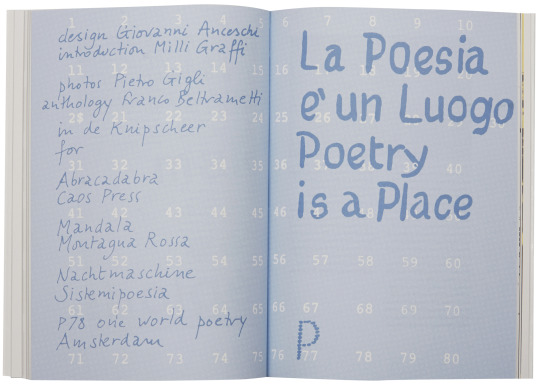
From: Si racconta Giovanni Anceschi. Per immagini, Edited by Daniele Rossi, «Libri d'artista», Quodlibet, Macerata, 2016
#graphic design#art#kinetic art#arte cinetica#arte programmata#pedagogy#education#art education#design education#poetry#book#giovanni anceschi#gruppo t#milli graffi#pietro gigli#franco beltrametti#daniele rossi#quodlibet#2010s
18 notes
·
View notes
Link
Mantan Presiden Juventus Kritik Cara Karantina Ronaldo
#CristianoRonaldo #Juventus #SerieA #beritabola #maniakbola #peminatbola #seputarduniasepakbola #pecintabola #infobola #GiovanniCobolliGigli #viruscorona #FightCoronaWithJokowi #CoronaLockdown
#virus corona#cristiano ronaldo#Juventus#Serie A#berita bola#info bola#kabar bola#update bola#seputar dunia sepakbola#pecinta bola#peminat bola#Giovanni Cobolli Gigli
0 notes